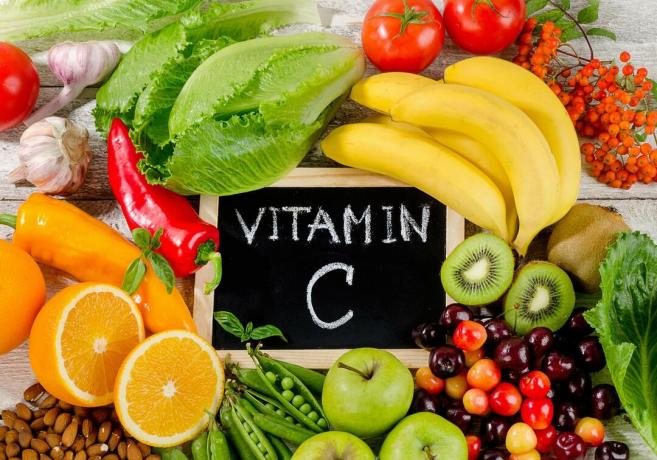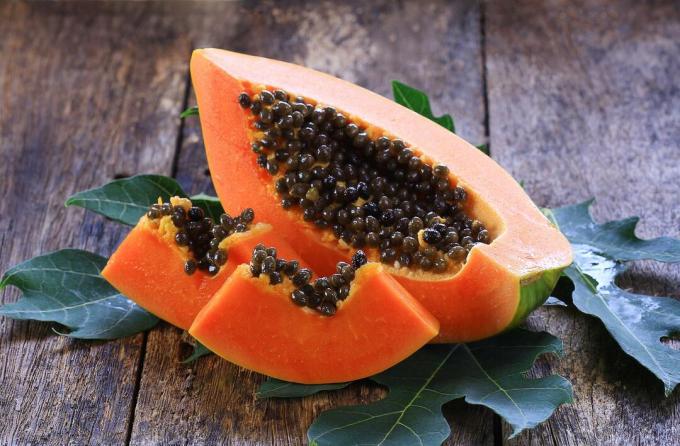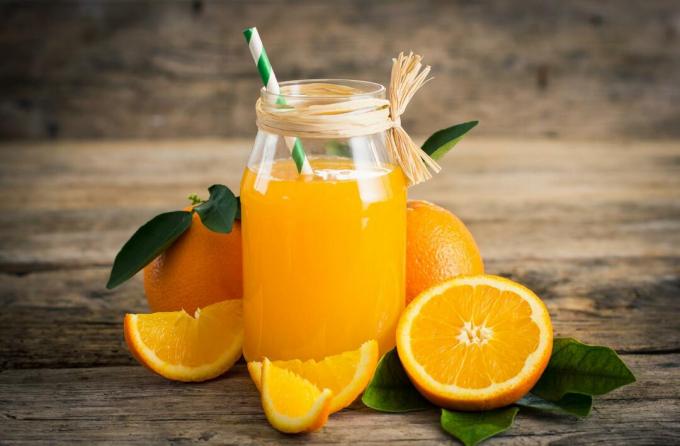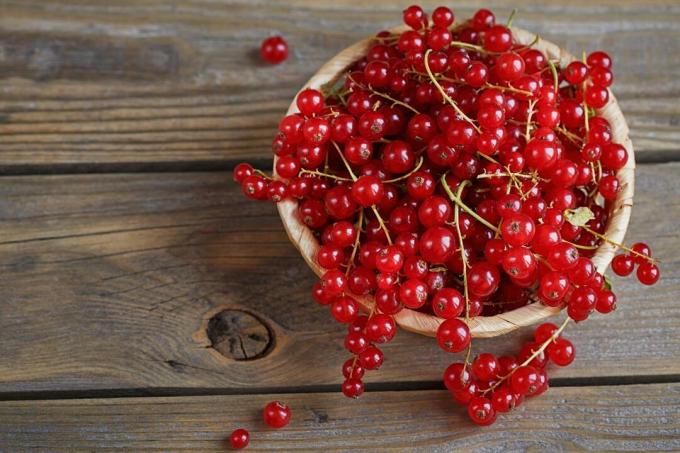Many people swear by vitamin C to strengthen their immune system and get through the winter well. But which fruit has the most vitamins? We have selected 15 types of fruit with lots of vitamin C for you.

Hardly any nutrient is as important for the body as vitamin C: Ascorbic acid is not only used in the construction of Connective tissue involved, but also protects the body from free radicals and promotes the absorption of Iron. However, the role of the nutrient in the immune system is particularly well known. A sufficient intake of vitamin C should strengthen the immune system and reduce susceptibility to colds and their duration. Especially in winter, many people therefore pay attention to a diet that is particularly rich in vitamins. But which fruit has the most vitamin C? Here you will find an overview of the best vitamin C bombs.
contents
- 1. Australian bush plum
- 2. camu camu
- 3. acerola
- 4. rosehips
- 5. sea buckthorn
- 6. guava
- 7. Blackcurrant
- 8. papaya
- 9. strawberry
- 10. lemon
- 11. orange
- 12. Grapefruit
- 13. mango
- 14. Red currant
- 15. gooseberry
1. Australian bush plum
The Australian bush plum has a vitamin C content of 2,300 to 3,150 mg per 100 g of pulp (Terminalia ferdinandiana) Probably the fruit with the most vitamin C. Unfortunately, the green, oval fruits of the bush plum are little known outside of Australia and are therefore extremely rare to find. Gradually, however, interest in the bush plum is growing: not only because of its high vitamin C content, but also their pleasant taste, which is said to be reminiscent of apricots and plums, ensures the increasing popularity of the Plant.
2. camu camu
It is traded as a new "superfood" from the Amazon - the camu-camu (Myrciaria dubia) is still unknown to many, but has recently become a real insider tip. With almost 1,800 mg of vitamin C and numerous secondary plant substances, the exotic fruit not only supports the immune system, but also has a positive effect on the gastrointestinal tract.

3. acerola
With just under 1,700 mg per 100 g, acerola (Malpighia glabra) are definitely among the fruits with a lot of vitamin C. The healthy fruit also contains provitamin A and various B vitamins. Unfortunately, the exotic red can only rarely be found fresh in this country - we often only have acerola as a juice or in a dried version. Although this reduces the vitamin C content, the acerola remains a real vitamin bomb.

4. rosehips
roses (pink) have a permanent place in many gardens. Unfortunately they will rosehips, which in the fall at many wild rose species mature but rarely used. There is hardly any fruit in Germany with so much vitamin C: Depending on the variety, up to 500 mg of the substance that stimulates the immune system is contained in 100 g of rose hips. But the taste of the rosehips is anything but boring and their fruity taste is convincing both raw and as a tea or jam.
5. sea buckthorn
Often the sea buckthorn (Hippophae rhamnoides) teasingly referred to as the "Lemon of the North" because it has a rather sour taste. In terms of vitamin C content, however, the local berry far surpasses the lemon: with 450 mg per 100 g, the small fruit contains almost ten times as much vitamin C as the healthy citrus fruit. Since the berries of the sea buckthorn hang on the plant from December until spring, the fruit with a lot of vitamin C is perfect as a nutrient supplement in winter.

6. guava
Rarely does a guava get lost (Psidium guajava) in Germany on the plate. It's a pity really, because the tropical exotic has a number of advantages. It not only scores with its bright pink or orange flesh, but also with its pleasant sweet and sour aroma. In addition, the guava with 273 mg vitamin C per 100 g is an excellent supplier of nutrients and with just under 34 kcal is also suitable for the slim line.
7. Blackcurrant
No other native fruit has as much vitamin C as it does Blackcurrant (Ribes nigrum): With just under 180 mg per 100 g, the small berries have almost five times more vitamin C than the related red currant. In Germany, blackcurrants are unfortunately only in season from June to August. But it can also be wonderfully processed into jam or juice and thus preserved for the winter months.

8. papaya
Cover all vitamin C requirements with just one fruit? With the papaya (Carica papaya) is not a problem - the tropical fruit contains a whopping 80 mg per 100 g. But the papaya is also impressive as a supplier of potassium. The tropical fruits can be found in our supermarkets all year round and are therefore also suitable for the Christmas season. When buying, however, you should make sure that you choose unripe fruits, as they will continue to ripen at home. In addition, there is also the possibility Plant papaya seeds and grow the fruit with it yourself.
tip: With us you will also learn how to eat papaya seeds.

9. strawberry
Many children are impatiently waiting for May, when the strawberry season finally starts again and the sweet fruits can be nibbled fresh from the field. But many adults cannot resist the aromatic temptation either. Luckily, you don't have to - they strawberry (Fragaria) is extremely healthy: With 65 mg of vitamin C and a slim 32 kcal per 100 g, the red berries can be nibbled without hesitation.
10. lemon
Anyone who thinks of a fruit rich in vitamin C comes to the lemon (citrus × lemon) not around. The sour citrus fruit has always had the reputation of being particularly rich in nutrients. But how much vitamin C does a lemon really have? In fact, the fruit only ends up in the middle with about 53 mg - nevertheless, the famous "hot lemon" with its vitamin content can serve well as a home remedy for colds.

11. orange
An orange juice in the morning is not only delicious, but also helps to cover the vitamin C balance: With around 50 mg per 100 g, the delicious citrus fruit proves to be the perfect source of vitamins. In addition, includes the orange (Citrus sinensis L.) but also numerous minerals such as potassium, magnesium or calcium.

12. Grapefruit
With its slightly bitter taste, grapefruit (Citrus paradisi L.) not for everyone. But if you don't let that deter you, you can crossbreed pomelo (Citrus maxima) and orange (Citrus sinensis L.) actually promote his health. The grapefruit not only contains just under 40 mg of vitamin C per 100 g - its bitter substance naringin also lowers the cholesterol level and can even have a positive effect on the blood sugar level.
13. mango
mangoes (Mangifera indica) are not only extremely popular because of their sweet aroma - their high vitamin C content of 39 mg per 100 g has ensured that the fruit is considered particularly healthy. In addition, B vitamins, vitamin E and a low concentration of acids ensure that the mango is one of the most popular tropical fruits in Germany.

14. Red currant
Whether as jam or fresh from the plant - the red one currant (Ribes rubrum) inspires enthusiasm among many with its sour taste. Due to its low calorie and fat content, the berry is also extremely healthy. But the red currant is also a fruit with a lot of vitamin C: On average, 100 g of the plant have 36 mg, so that the small berry turns out to be a real vitamin bomb.

15. gooseberry
gooseberries (Ribes uva crispa) were long considered sour and almost inedible - but in fact their taste is pleasantly refreshing, sweet-sour. This makes it a real treat for the palate. Our health also benefits from the small berries: With a vitamin C content of 34 mg per 100 g, as well as a high vitamin A and vitamin E content, the gooseberry is a great nutrient supplier.
You can not only strengthen your immune system with fruit, herbs can also have a positive effect. More about immune-boosting herbs you can find out in our special article.
...and receive concentrated plant knowledge and inspiration directly in your e-mail inbox every Sunday!
